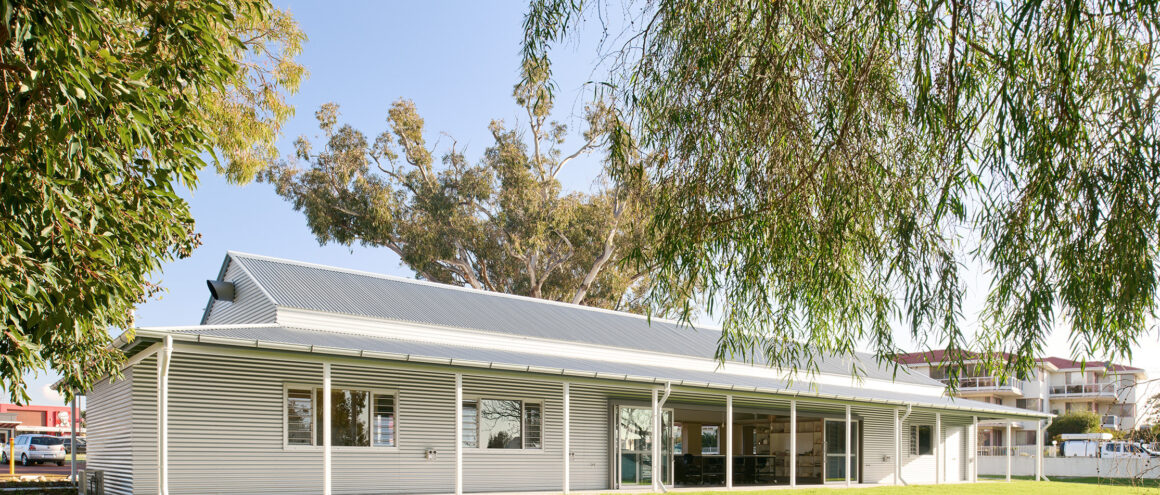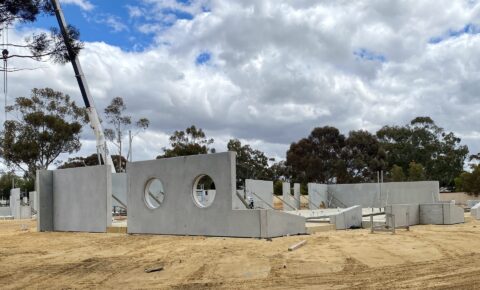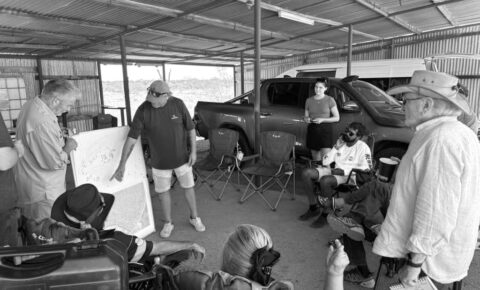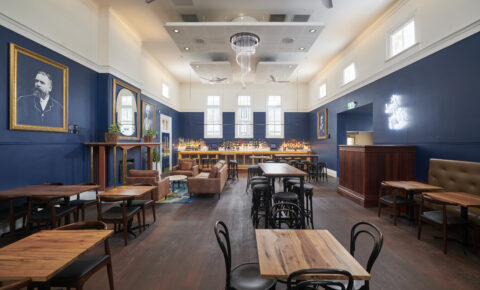Designing for Construction: Building Well From the Start
For two thousand years, the Vitruvian principles of firmness, commodity, and delight have been a measure of good architecture. Construction is where these qualities first come together: firmness through durable structures, commodity through efficiency and local resourcefulness, and delight through materials and craft that connect a building to its place. How a building begins sets the trajectory for its entire life.
Why Construction Matters
Construction gets a lot of attention in sustainability discussions, particularly around embodied carbon and upfront energy. But despite that focus, sustainable construction strategies are rarely adopted in practice. The path of least resistance – business-as-usual materials and methods – often wins out.
At Slavin Architects, we see construction as a decisive moment of responsibility. The choices made here set a building’s trajectory: whether it begins life with unnecessary weight, or with integrity and foresight. Reducing impact in construction is not about chasing trends; it is about resisting the easy option and choosing approaches that deliver long-term benefit.
Material Choices
Every material carries a story of extraction, manufacture, transport, performance, and eventual reuse or disposal. The choices we make here strongly influence the overall impact of construction. While designing, we ask:
- What is the carbon cost of this material – how is it made and where does it come from? Is there a locally alternative, or is there local labour available capable of using this material?
- Will this material last, and can it be repaired or recycled / reused?
- How will it perform thermally, structurally, chemically?
- Does it lend itself to waste minimisation – either their modular design, standard sizing, or opportunities to reuse offcuts?
The lowest impact material isn’t always the best option in the context of the projects’ entire lifecycle. A ‘sustainable’ material is not sustainable if it performs poorly in use. For example, a timber product that off-gasses VOCs or degrades quickly increases long-term costs and health impacts. Conversely, a concrete wall with its’ high thermal mass reduces heating and cooling needs – when detailed for longevity it’s able to pay back its embodied carbon over its lifetime.
Material choices shape the environmental, social, and financial impact of construction – influencing carbon, comfort, cost, and community outcomes across the life of a building. Choosing wisely can:
- Reduce embodied carbon and energy – by lowering the carbon locked into production and transport.
- Improve operational performance – by supporting comfort, health, and efficiency in use.
- Extend durability and lifespan – through robust materials that minimise replacement.
- Enable waste minimisation – by aligning with modular systems, standard sizes, and reuse of offcuts.
- Retain end-of-life value – by selecting materials that can be reclaimed, recycled, or safely disposed of.
- Strengthen local and cultural impact – by sourcing materials and labour from WA, supporting trades, industries, and community knowledge.
Construction Waste and Closed Loops
Construction is traditionally wasteful. We design to minimise offcuts, standardise component sizes, and consider prefabrication where it reduces waste. Just as importantly, we think about the end of life during design:
- Can this material be dismantled, not demolished?
- Can it be recycled into another project, not sent to landfill?
- Does it maintain value beyond its first use?
Reducing construction waste is not only about minimising landfill. It is also about treating materials as resources with continuing value. By designing modestly, aligning with standard component sizes, and incorporating modular systems, we reduce unnecessary offcuts. Where waste is unavoidable, we plan for reuse – whether in the project itself or through recycling streams that extend its usefulness.
This closed-loop thinking means that today’s waste becomes tomorrow’s resource – extending the life of materials and reducing pressure on natural systems. It also encourages builders and clients alike to see waste differently: not as an inevitable by-product, but as an opportunity for innovation and stewardship.
Local and Regional Resources
Sourcing locally is about more than materials – it’s also about the people who build. Every project is dependent on labour, knowledge, and skills. What trades are readily available and local? How can construction support regional employment and sustain craft traditions? A design that relies on specialist labour from far afield risks higher costs, delays, and a heavier carbon footprint.
For materials, WA offers a rich palette of limestone, stone, brick, and metals with proven performance in local conditions. Choosing them:
- reduces the carbon cost of transport,
- ensures supply chains are resilient,
- supports regional jobs and industries, and
- strengthens continuity of both craft and community capacity.
By considering both materials and labour, we ensure that construction contributes directly to social as well as environmental sustainability – buildings become embedded in the knowledge and capacity of the people around them.
Building Smart, Not Just Green
Reducing impact is not about chasing trends; it is about designing buildings that make sense for their context. That includes:
- Efficient structures that use no more material than necessary.
- Simple details that reduce labour, waste, and long-term failure points.
- Pre-finished surfaces that reduce site work and future maintenance.
Smart construction is as much about restraint as it is about innovation. It means resisting unnecessary complexity, working with proven methods, and choosing solutions that balance performance with simplicity. By designing with clarity, we reduce the risk of failure and make construction easier, faster, and less wasteful.
This approach delivers more than lower impacts: it creates buildings that are robust, economical, and resilient over time. In doing so, we shift sustainability away from being a fashionable label and back to its essence – careful design that serves both people and place.
A Legacy of Resourcefulness
Construction is where a building’s long-term story begins, and getting it off to the right start matters. It is here that firmness, commodity, and delight first come together: firmness in durable structures and resilient detailing, commodity in the resourcefulness of local trades and efficient systems, and delight in materials and craft that connect a building to its place.
It is expressed in many ways: careful material choices that balance durability, performance, and embodied carbon; strategies to minimise waste and design for reuse; and sourcing that strengthens local knowledge and economies. Buildings set themselves up for endurance when construction begins with integrity, resourcefulness, and respect for place.
In this way, construction becomes the foundation of long-term sustainability. By uniting firmness, commodity, and delight from the very beginning, we set buildings on a path to endure, serve, and inspire across a 100-year design life – creating legacies of resilience and responsibility.
→ Continue Reading: Designing for Life in Use



